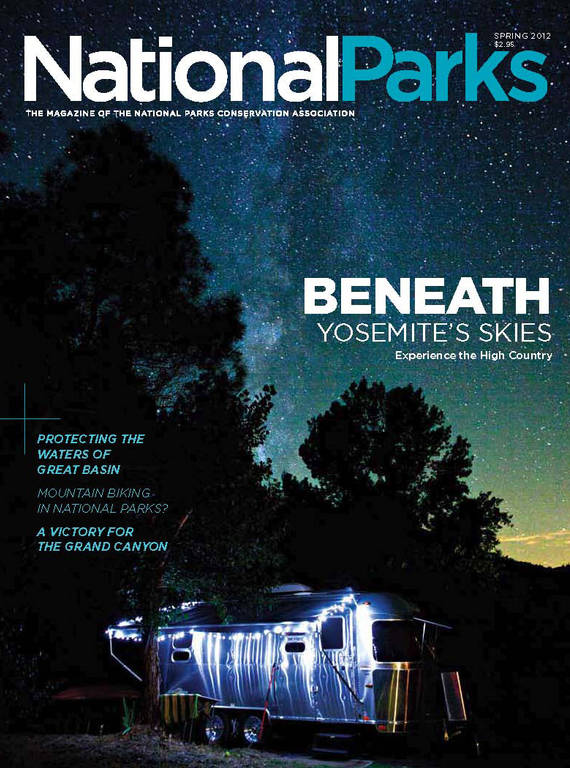Spring 2012
Nesting Instincts
What happens when species protection trumps historical interpretation at Petersburg National Battlefield?
Every December for the last five years, a couple of amorous bald eagles have arrived in Petersburg National Battlefield in Virginia. They find the same 65-foot-tall pine tree, gather sticks to build and repair their nest, lay eggs, and guard them jealously. A few months later, as many as three wobbly eaglets appear on the edge of the nest, flapping their wings and summoning the nerve to fly. Consumed by their own dramas, the eagle family seems blissfully unperturbed by its human observers.
But every year humans do arrive, and inevitably, a few are dismayed. That’s because the eagles sit right on top of Colquitt’s Salient, a Confederate position opposite Fort Stedman—where Robert E. Lee launched his last major offensive before surrender in 1865. Every year, the National Park Service shuts down the area to visitors for the six months of the eagles’ residency, letting the birds nest in peace and allowing visitors to view the fort from afar.
Though Petersburg National Battlefield was established to protect the remains of a nine-and-a-half-month siege in 1864 and 1865, its 2,700 acres of woods and meadows also offer critical wildlife habitat. Much like other battlefields, Petersburg’s green spaces attract a wide array of creatures, including opossums, skunks, snakes, deer, foxes, coyotes, bobcats, and even the occasional bear; as many as 50 percent of park visitors come expressly to walk, horseback ride, or bicycle the bucolic trails. That presents a challenging task for park management.
“We’re trying to balance protecting the eagles while providing the historic tours of the site that the visitors are coming to see,” says Dave Shockley, chief of resource management for Petersburg National Battlefield. “We want both the natural and historical values to be represented well.”
The eagles haven’t made it easy, however. They have nested near railroad tracks, a recreational trail, a residential neighborhood, and the fort—and the traffic doesn’t really seem to bother them. Nonetheless, Petersburg shuts down the recreational trail and Colquitt’s Salient between mid-December and mid-July, when the eagles are nesting, in order to approximate the National Fish and Wildlife Service’s (FWS) recommended 750-foot buffer zone around the nest.
Although some visitors are disappointed, precautions like these have contributed to one of the greatest species recovery stories of all time. Because of habitat loss, effects from the pesticide DDT, and illegal shooting, there were only 487 nesting pairs of bald eagles in the continental United States in 1963. The public took notice—bald eagles are not only our nation’s symbol but also charismatic birds in their own right. They mate for life, their wings can span as wide as eight feet, and they can build nests ten feet across. The Fish and Wildlife Service added the species to the endangered list in 1967, initiating a long but successful recovery period that led to its removal from the list in 2007. Now FWS estimates that there are more than 10,000 pairs of nesting bald eagles in the continental United States.
BIRDING THE BATTLEFIELD
Within six miles of Petersburg National Battlefield, the James River hosts one of the species’ most phenomenal success stories. Eagles vanished from the James River in the mid-1970s. Then the population started to rebound, rising each year, sometimes by as much as 10 percent, according to the Center for Conservation Biology at the College of William and Mary and Virginia Commonwealth University. Last spring, the center recorded an unprecedented 174 pairs of nesting eagles on the James River, a number that is nearing capacity—and pushing eagles to find nesting sites like the one at nearby Fort Stedman.
Still, threats to the eagles remain. Just outside Petersburg National Battlefield, the communities of Richmond, Hopewell, Petersburg, and Williamsburg will likely expand in the coming years, closing critical open space and creating a long corridor of human development. As development spreads, public lands of all sorts will become more important as eagle habitat.
“We have these public lands—there are quite a few on the James—and those are going to play a more critical role,” says Bryan D. Watts, director for the Center for Conservation Biology. The public lands include those managed by the Park Service, FWS, and the military.

National Parks
You can read this and other stories about history, nature, culture, art, conservation, travel, science and more in National Parks magazine. Your tax-deductible membership donation of $25 or more entitles…
See more ›In fact, many other Park Service sites also harbor nesting eagles in Virginia. Last year, during the Center for Conservation Biology’s spring survey, staff from FWS and the College of William and Mary found eight nests in Colonial National Historical Park, one at Malvern Hill in Richmond National Battlefield, and three at George Washington Birthplace National Monument.
“One of the hopes is that these properties that have historic significance can play a dual role,” says Watts. “We can protect them for their cultural importance but at the same time provide habitat for some of these species we’re concerned about.”
Last year marked the 150th anniversary of the start of the Civil War, and 2015 will mark the 150th anniversary of Fort Stedman’s role in the end of it. Now that the resident eagles have produced two or three healthy eaglets every year—and don’t seem bothered by humans—Shockley hopes to allow more visitors to approach the fort while the eagles are nesting. Despite the careful management the eagles require, it seems fitting that they chose this spot. Who better but the national symbols to preside over such a storied site in American history?
About the author
-
 Kate Siber Contributor
Kate Siber ContributorKate Siber, a freelance writer and correspondent for Outside magazine, is based in Durango, Colorado. Her writing has appeared in National Geographic Traveler and The New York Times. She is also the author of “National Parks of the U.S.A.,” a best-selling children’s book.



